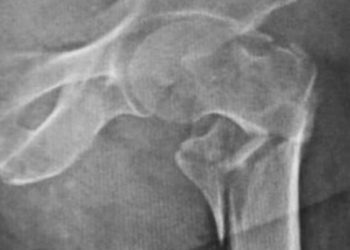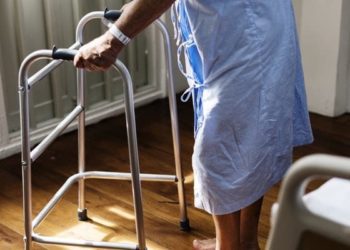Multiple factors may increase risk of falls in young children
1. Increased odds of falls from furniture in children were associated many factors, including not using safety gates, leaving children on raised surfaces, children climbing or playing on furniture and not teaching children rules about what things they should not climb on in the kitchen.
2. Decreased odds of falls from furniture were associated with being able to play and climb on garden furniture.
Evidence Rating Level: 3 (Average)
Study Rundown: Injuries due to falls are common cause for emergency department visits in children. While previous systematic reviews have shown that certain interventions, like safety gates, help decrease the risk of falls from furniture in children, no studies have analyzed the other modifiable risk factors that exist. This multicenter case-control study aimed to estimate associations for risk and protective factors for child falls from furniture.
This study found that parents of cases, when compared to parents of controls, were significantly more likely to not use safety gates in the home, to leave their children, change their diaper or put car seats or bouncing seats on raised surfaces, to allow their children to climb and play on furniture and also to have not have taught their child the rules of about climbing objects in the kitchen. Interestingly, controls were more likely to have played or climbed on garden furniture.
Strengths of this study include being a large multicenter case-control study using National Health Service data from urban and rural locations. Statistical adjustments were also used appropriately to correct for potential identifiable confounding variables. However, being a case-control study, the study is unable to determine causation. The design is also subject to selection and recall bias.
Click to read the study in JAMA Pediatrics
Relevant Reading: Patterns of injury associated with routine childhood falls
In-Depth [case-control study]: This multicenter case-control study used data from emergency departments, inpatient wards, and minor injury units from four National Hospital Service hospitals in the United Kingdom. Case children ages 0 to 4 years were recruited if they had a fall from furniture. Recruitment started in June 2010 and ended in November 2011. Recruitment of controls began in June 2010 and ended in April 2012. Four controls were assigned to every case and were matched on age, sex, and time of injury (i.e., within 4 months). Exposures were assessed using questionnaires. Logistical regression and directed acyclic graphs were used to adjust for further confounding variables, such as neigbourhood deprivation, distance between residence and hospital, quality of life and child behaviour. Appropriate sample size calculations were done to detect an odds ratio of 1.43 with α =0.5. Of the eligible 2,267 cases and 7,930 potential controls, 29.7% and 34% were included in the final analysis, respectively.
Cases were significantly more likely to not use a safety gate (aOR 1.65, 95%CI 1.29-2.12), leave their children on raised surfaces (aOR 1.66, 95%CI 1.34-2.06) or not have taught their children rules about climbing objects in the kitchen (aOR 1.58, 95%CI 1.16-2.15). Cases under 12 months were also more likely to have their diapers changed on raised surfaces (aOR 1.89, 95%CI 1.29-3.27). However, cases were significantly less likely to have played or climbed on garden furniture (aOR 0.74, 95%CI 0.56-0.97).
More from this author: Overall US diet quality improved from 1999 to 2010, Arterial catheter monitoring in ICU not associated with mortality benefit, Inconsistent quality of evidence for biomarker use on FDA drug labels, Maintenance opioids in drug users linked with lower rate of hepatitis C infection, Delayed antiretroviral therapy initiation linked to decreased immunologic recovery in HIV
Image: PD
©2014 2 Minute Medicine, Inc. All rights reserved. No works may be reproduced without expressed written consent from 2 Minute Medicine, Inc. No article should be construed as medical advice and is not intended as such by the authors, editors, staff or by 2 Minute Medicine, Inc.







